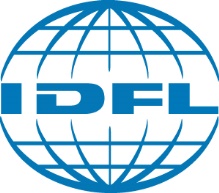
BCI Measuring Cotton Consumption - Independent Assessment for Retailer and Brand (RB) Members
Aims
The aim of BCI, a global sustainability initiative, is to make global cotton production better for the people who produce it, better for the environment it grows in, and better for the sector's future.
Measuring Cotton Consumption (MCC) is an essential aspect of BCI's goals because it allows for tracking and assessing the impact of sustainable practices throughout the supply chain.
Scope
The scope of BCI in Measuring Cotton Consumption (MCC) is broad and encompasses various aspects. Here are key aspects of the scope:
- Assessing Sustainability Impact: Tracking the consumption of BCI helps evaluate the overall impact on environmental, social, and economic aspects. It allows stakeholders to understand the extent to which sustainable practices are being adopted.
- Promoting Transparency: BCI focuses on enhancing transparency within the entire cotton supply chain. This includes tracking the flow of cotton from farms to manufacturing and retail. Measurement and reporting of cotton consumption contributes to transparency within the cotton supply chain. This transparency is crucial for consumers, retailers, and other stakeholders who want to make informed choices about the products they buy and sell.
- Encouraging Adoption: By measuring and highlighting the positive outcomes associated with BCI, the initiative aims to encourage more farmers and businesses to adopt sustainable practices. This, in turn, contributes to the overall sustainability of the cotton industry.
- Setting Targets and Goals: BCI's scope includes fostering a culture of continuous improvement. Regular measurement of cotton consumption allows the initiative to set targets and goals, monitor progress, and adapt strategies to address emerging challenges and opportunities. This helps drive continuous improvement and ensures that the cotton sector moves towards greater sustainability over time.
- Market Transformation: BCI aims to transform the cotton market by encouraging more businesses to source and use BCI Cotton. The measurement of consumption is vital in showcasing the market demand for sustainable cotton and influencing businesses to adopt responsible sourcing practices.
- Stakeholder Collaboration: BCI engages with a wide range of stakeholders, including farmers, businesses, NGOs, and consumers. Measuring Cotton Consumption provides a common metric for assessing the effectiveness of sustainability efforts and facilitates collaboration among stakeholders.
- Global Reach: The scope of BCI is global, encompassing cotton production in various countries. By measuring consumption globally, the initiative can track the progress of sustainability practices on a broad scale and work towards creating a more sustainable global cotton industry.
- Social Responsibility: Measuring Cotton Consumption helps ensure that social responsibility is integrated into the supply chain and improve the well-being of cotton farmers.
In summary, the scope of BCI in Measuring Cotton Consumption is multifaceted, aiming for a holistic transformation of the cotton industry toward greater sustainability and responsible practices across the supply chain.
Requirements
BCI Retailer and Brand Members (RB Members) are required to calculate their total cotton fiber consumption annually, and submit relevant supporting documentation in accordance with BCI’s Requirements and Guidance. BCI’s annual deadline for cotton consumption submission is 15 January. From January 2024 onwards, RB Members are also required to commission an Independent Assessment of their cotton fiber consumption measurement. Independent Assessment is a conformity assessment where an individual or organization, outside of the RB Member’s organization, assesses the conformity of the RB Member’s cotton fiber consumption measurement against BCI’s Requirements and Guidance. This is to ensure consistency and reliability of their results. The requirement and frequency of the Independent Assessment is based on their membership size category, and therefore their total amount of cotton fiber consumption. BCI’s annual deadline for submission of Independent Assessment is 31 March.
- Be a BCI RB Member for 12 months.
- Submit Cotton Consumption Submission Form to BCI by 15 January
- Application & Agreement for an Independent Assessment
- Remote Assessment
- Corrective Action
- Assessment Report finalized and shared with BCI by 31 March
Consistent and reliable cotton fiber consumption measurements create a level playing field for all RB Members. They support RB Members’ cotton strategies and inform associated communications. Independent Assessments are designed to support the responsibilities RB Members have committed to uphold as part of BCI Membership.
Requirements
- Document Protocol
- Records (Product Components, Third Party Brands, Data Collection, Timeframe, Exclusions, Voluntary Exclusions, Record Keeping).
Additional Resources
IDFL Team
- Australia | australia@idfl.com
- Africa | africa@idfl.com
- Bangladesh | bangladesh@idfl.com
- Cambodia | cambodia@idfl.com
- China | china.audits@idfl.com
- Europe | eu.audits@idfl.com
- India | india@idfl.com
- Indonesia | indonesia@idfl.com
- Italy | italy@idfl.com
- Japan | japan@idfl.com
- Korea | korea@idfl.com
- Malaysia | malaysia@idfl.com
- Myanmar | myanmar@idfl.com
- North & South America | na.audits@idfl.com
- Pakistan | pakistan@idfl.com
- Philippines | philippines@idfl.com
- Portugal | portugal@idfl.com
- Taiwan | taiwan.audits@idfl.com
- Turkey | turkey@idfl.com
- Vietnam | vn.audits@idfl.com
- Global | audits@idfl.com
